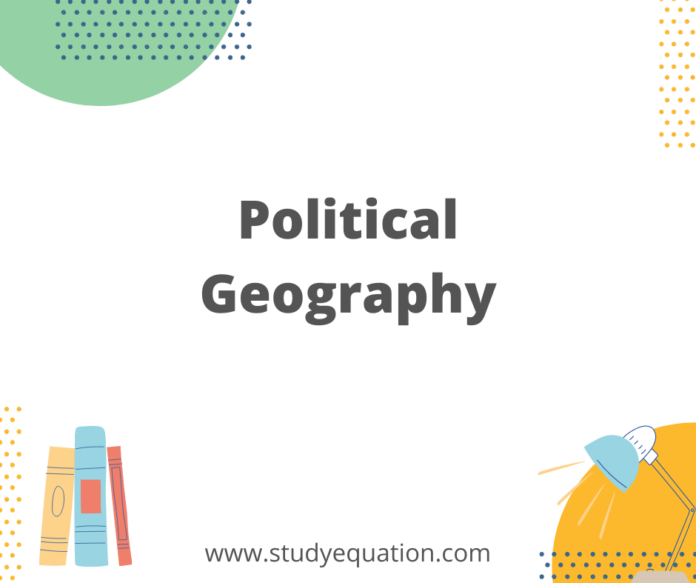The concept of political geography looks at and tries to explain how governments and countries are affected by their location. It looks at a huge number of different elements to figure out the relationship between places and politics. And it can be said that it is not just a theoretical concept, political geography has practical applications in things like the design of constitutionality for elections.
Table of Contents
Introduction
People have been putting together and organizing themselves all along. Geographers are keen on such organizing in light of the fact that it is a statement of the human association of room and is firmly connected with other spatial confirmations of culture, like religion, language, and nationality.
Political Geography is the organization of the association and dispersion of political peculiarities, remembering their effect on other spatial parts of society and culture. it is a study of both the spatially uneven outcomes of political processes and the ways in which political processes are themselves affected by the geographical structure.
They are intertwined because geographical images and relationships enter into political la nation’s geography affect its view of itself and its view of the world. Politicians and political decisions must not only of people, but also technology and natural resources.
How does geography affect politics?
Geography plays a very important role when it comes to making many important political actions and decisions.
The location of natural resources, borders of countries, access to ports, and the designation of voting districts are a few of the many geographical factors that affect politics. Size, shape, and location have a great effect on the power and stability of states. Keep in mind that some states are bigger than others but resources are not evenly distributed.
Size
As a rule, the bigger the state, the better the opportunity that there will be an adequate number of assets to help the state, yet Canada, Russia, and Australia are huge states with somewhat small regions equipped for supporting agribusiness.
Size can likewise block the viable control of a state’s kin or potentially assets.
Shape
Just like size does, shape also affects the well-being of a state, and the same is done by fostering or hindering an effective organization. Examples of different states and how the shape affects their political decisions are after by the same are mentioned below:
Compact states: states that are roughly circular in shape the distance from the center to any point on the boundary exhibits little variation Poland, Zimbabwe, Cambodia, and Uruguay are examples.
Elongated states: a state whose territory is decidedly long and narrow; its length is at least six times greater than its average width. the least efficient shape administratively is represented by countries like Vietnam, Norway, or Chile which are long and narrow. Parts of the country far from the capital are likely to be isolated. These countries are likely to encompass more diversity of climate, resources, and people.
Perforated states: a state whose territory completely surrounds the territory of another state so that it has a hole in it. South Africa (Lesotho) and Italy (San Marino and Vatican City) are examples.
Prorupt states: nearly compact but possess one or sometimes two narrow extensions of territory. Proruption may simply reflect peninsular elongations of land area, such as with Thailand. In other instances, the extensions have an economic or strategic significance – securing access to resources or water routes. Namibia strip was designed by the Germans to give access to the Zambezi River.
Fragmented States: countries composed entirely of islands (Philippines, Indonesia), countries partly on islands and partly on the mainland (Italy and Malaysia), and countries that are chiefly on the mainland, but whose territory is separated by another state (US). Pakistan was once a fragmented country until 1971 when the eastern part broke away and became Bangladesh.
Don’t Miss: Types of Ecosystems And Their Examples
Things affected by political geography
Political geography has extended the scope of traditional political science approaches by acknowledging that the exercise of power is not restricted to states and bureaucracies, but is part of everyday life. This has resulted in the concerns of political geography increasingly overlapping with those of other human geography sub-disciplines such as economic geography, and, particularly, with those of social and cultural geography in relation to the study of the politics of place. Modern political geography often considers:
1. how and why states are organized into regional groupings, both formally (e.g. the European Union) and informally (e.g. the Third World)
2. the relationship between states and former colonies, and how these are propagated over time, for example through neo-colonialism
3. the relationship between a government and its people
4. the relationships between states including international trades and treaties
5. the functions, demarcations, and policing of boundaries
6. how imagined geographies have political implications
7. the influence of political power on geographical space
8. how communications (telephone, radio, TV, Internet, social networks) have political implications
9. the study of election results (electoral geography).





